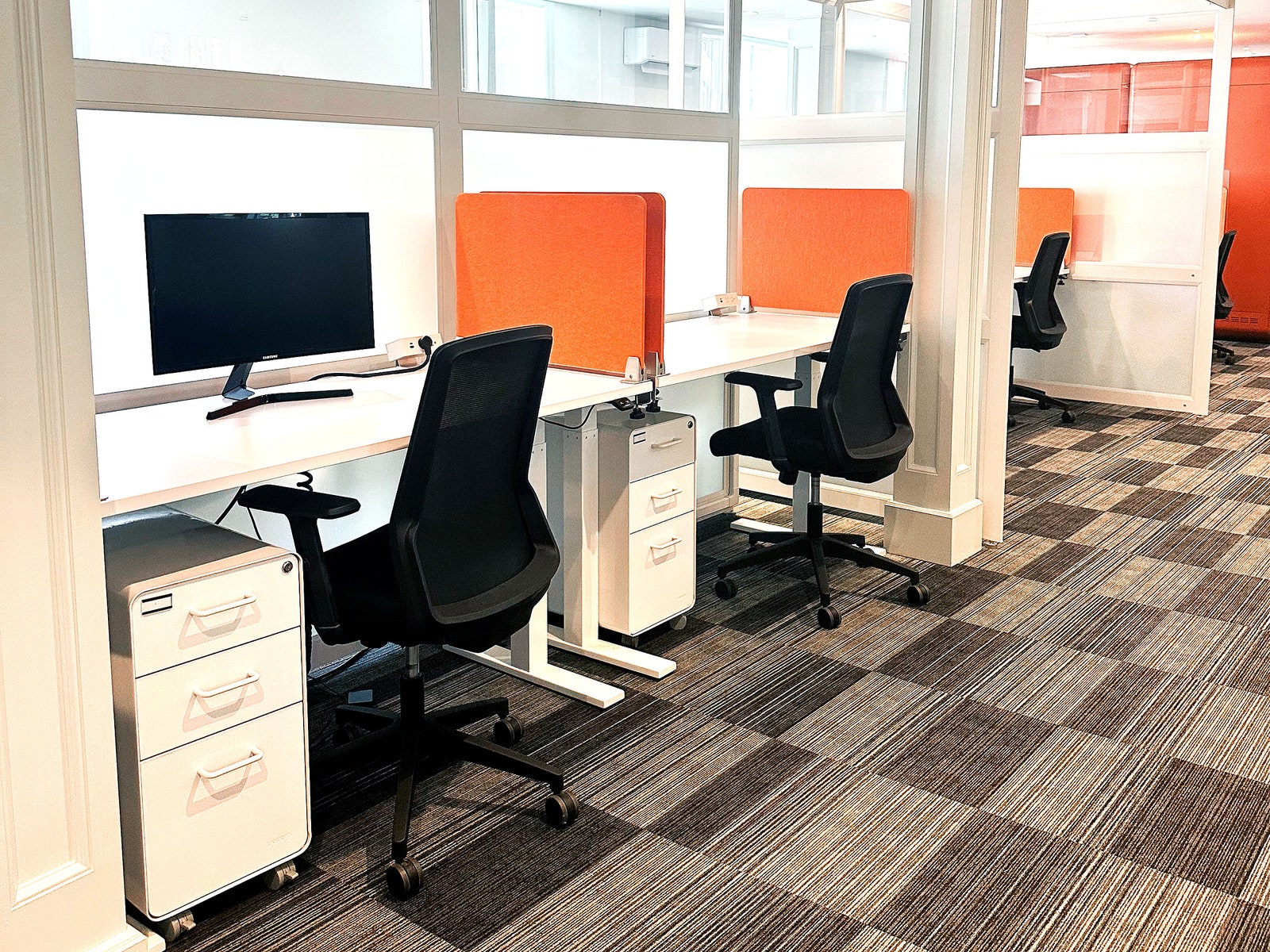May 22, 2024:
The white colonial revival church with its high steeple adds an idyllic architectural touch to the affluent town of Huntington, a Long Island suburb of New York City. But a sign grabs the eye from the road: “Coworking space,” it says. “Kind of like a WeWork. Was a church, but not anymore.”
The former church may have been leveled and replaced with condos, had Michael Hartofilis not bought it and repurposed it as a coworking venue called Main Space that opened earlier this year. What was once a sanctuary with a high ceiling has been split into two floors of coworking space, with cubicles, glass phone booths, and minimalist art. Industrial-style beams and modern, geometric light fixtures are juxtaposed with the preserved, intricate crown molding and artisan details that hug the building’s windows and doorways.
I spent a morning working out of the bisected sanctuary, where cubicles with ergonomic desk chairs have replaced church pews. Neon signs and bright colors make it easy to forget Main Space was once a church, and it has all the amenities of a typical coworking space—a gym, ice bath, kitchen, various conference rooms with comfortable armchairs and patterned wallpaper, and an outdoor patio decorated with a string of lights. But it’s also embedded in the community. On a Thursday afternoon, people were scattered at desks throughout the building and in conference rooms, chatting with one another between their own business calls.
“Ideally, it is local people” who sign up for the coworking space, says Hartofilis, who also heads an energy company and is working on a neighborhood social app. He’s hoping those who come feel like they’re part of something exclusive and get to know one another. But people have already come from neighboring towns, or used it as a meeting place between New York City and towns on Long Island. “There’s not a whole lot of supply as far as coworking spaces, there’s nothing like this.”
Courtesy of Main Space
After Covid changed work patterns and styles, coworking is hanging on. The industry is growing and is expected to continue doing so—despite negative headlines about the company that brought coworking to the masses: WeWork. The coworking behemoth filed for bankruptcy in November, sparking concerns about the model after it took on office leases at a rapid pace and sought to sublease desks out at a premium. Rising interest rates and massive shifts in the office space marketplace following the Covid outbreak hammered the coworking giant, which was at one time valued at $47 billion. But WeWork is now preparing to right itself and exit bankruptcy at the end of May, getting $450 million in new investments and shedding excess office space after renegotiating leases. And industry experts say there’s lots of potential for coworking to mature.
“Coworking is a great product,” says Jonathan Wasserstrum, a partner at Unwritten Capital, who has invested in Switchyards, a coworking company in the US southeast which shuns the title of coworking in favor of “work clubs.” The company has spaces in Atlanta; Nashville, Tennessee; and Charlotte, North Carolina. A former school, a motorcycle garage, a warehouse where elevators were tested, and a church are among its offerings. Coworking “is in high demand, and will continue to be in high demand,” Wasserstrum says.
Many of the memberships at Switchyards’ locations are sold out. The company plans to have 25 clubs by the end of the year—with a total of 200 in the next five years. The design and music selection take inspiration from libraries, coffee shops, and hotel lobbies more than offices.


























